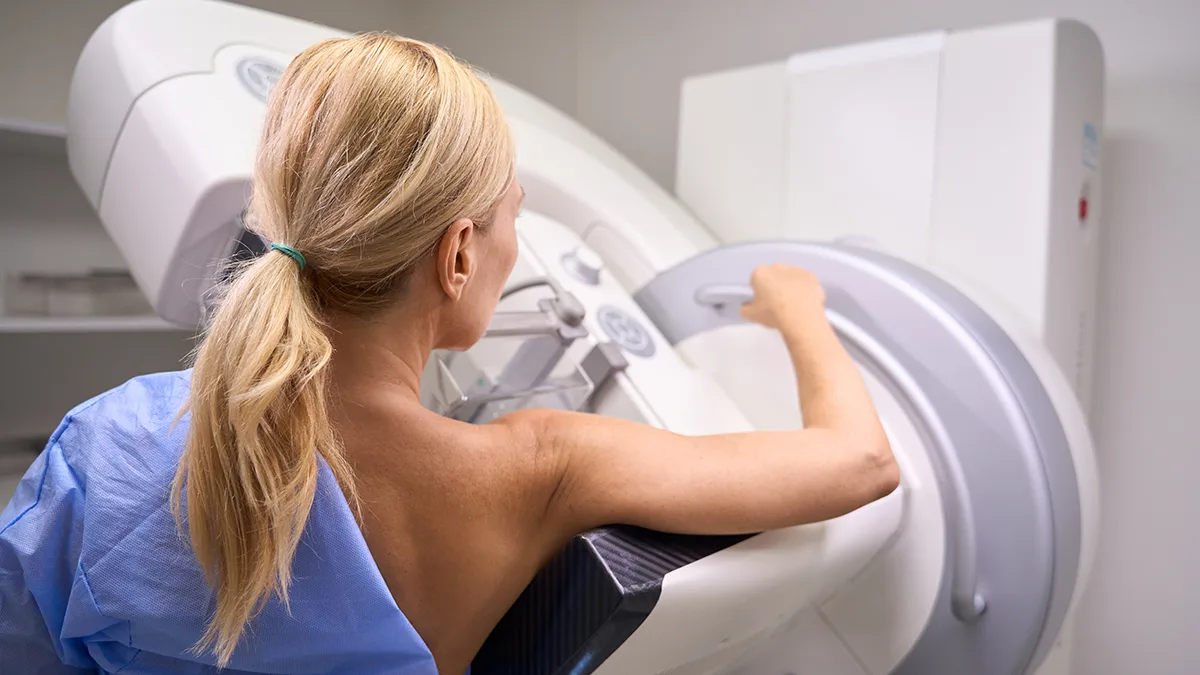
Overview
The adaptive clinical trial platform known as I-SPY leverages biomarkers to innovate the testing novel breast cancer treatments.
Clinical trial platform offers flexibility and efficiency to studies
Twenty years ago, patients newly diagnosed with breast cancer often had surgery, especially radical mastectomy. However, they had mixed results at best.
Not satisfied with this status quo, Laura Esserman, MD, pioneered a new way to find better treatments. Esserman, director of the Carol Franc Buck Breast Care Center at the University of California, San Francisco (UCSF), and Professor of Surgery and Radiology, developed a novel trial design that speeds the development of improved therapies, particularly for patients with high-risk cancers.
Esserman’s impactful initiative is a clinical trial platform known as I-SPY (Investigation of Serial studies to Predict Your Therapeutic Response with Imaging and Molecular AnaLysis). I-SPY builds more flexibility and efficiency into ongoing studies. It allows trials to adapt to the data they accumulate as they continue.
The success of the I-SPY model relies on enhanced and improved biomarkers. These enable a more nuanced understanding of how individuals respond to breast cancer treatments. Investigators can use response data to incorporate new therapies into treatment regimens.
For example, they can replace older drugs with newer, less toxic and more effective treatments. This approach allows patients who reach the goal of complete response (elimination of tumor) to avoid the rest of a standard chemotherapy regimen.
The success of the I-SPY adaptive clinical trial design has given investigators confidence to offer preventative therapies for patients with earlier-stage disease and even to patients at high risk who do not yet have breast cancer.
The I-SPY model also has influenced trial designs in other therapeutic areas and is being implemented in pancreatic and glioblastoma studies. Colon cancer researchers are looking at using it as well. Recently, when the global pandemic accelerated the evolution of clinical trial design, researchers used the I-SPY platform to speed testing of new drugs for patients critically ill with COVID-19. This use of I-SPY design showed how successfully it could scale to other diseases.
Ground-Breaking Findings from I-SPY 2
From the start, the I-SPY team wanted big wins. They wanted it to confirm the potential of drugs that could significantly impact large numbers of patients. One of those wins included pembrolizumab (KEYTRUDA®), the Merck immunotherapy that has become the world’s best-selling drug and a standard treatment for various cancer indications.
“Pembro was a game changer, which confirmed the effectiveness of immunotherapy in certain patient subtypes, including triple-negative breast cancer,” said Esserman.
Through I-SPY, researchers also learned a lot about breast cancer subtypes. For example, they found that about a third of patients with high-risk, hormone-positive breast cancers had an immune type and responded as if they were triple-negative subtypes, a particularly aggressive form of the disease.
Most importantly, in 2020, I-SPY showed that regardless of the cancer subtype and the drug, if a drug causes the tumor to disappear, the patient’s chances of survival increase significantly. In statistical terms, the drug therapy could cut the hazard ratio in half (to 0.2).
Moreover, “If you give the right drug to the right patient at the right time, the chance of a complete response rate is over 60 percent for the population with molecularly high-risk cancers, compared to 19 percent when we started the trial in 2010,” Esserman continued.
As I-SPY Evolves, An Urgent Need for New Breast Cancer Biomarkers
I-SPY 2’s findings put urgent pressure on researchers to rethink the best ways to accurately identify which patients are most likely to benefit from specific treatments, including creating a new category of biomarkers that measure what Esserman refers to as response predictive subtypes.
These biomarkers can predict which patients are most likely to respond to particular types of drugs. They also can predict the degree of their response and whether those on certain medicines should be escalated to the next type of therapy.
That I-SPY 2 finding was another big step forward, but Esserman didn't stop. As researchers learned more about the right treatment regimens for individual patients, they wanted to explore new, more flexible therapeutic strategies.
However, evaluating a variety of options from scratch would take far too much time and resources using traditional clinical trial designs. I-SPY 2 offered an alternative: sequential therapy based on response. That is, moving a patient to the next treatment sequence if her response is insufficient or stopping treatment quickly and going to surgery if a complete response is predicted to have been achieved.
Right now, drug developers cannnot use I-SPY findings for their regulatory-grade pivotal trials, which the FDA strictly mandates. However, Esserman said pharma companies remain interested in the platform's flexibility and speed and use it to get early signals on new drugs.
Also, the FDA allows use of some biomarker approaches to identify patients eligible for the trials. Esserman hopes that, in the future, the agency will incorporate I-SPY data into its reviews and allow the I-SPY platform to serve a seamless phase 2/3 trial to rapidly prove the reproducibility of positive results.
The I-SPY infrastructure continues to evolve. It is an integral part of the Quantum Leap Healthcare Collaborative, a non-profit established in 2005 by Esserman and medical researchers at UCSF and Silicon Valley entrepreneurs. The Collaborative brings together in a pre-competitive environment Silicon Valley’s rapid learning cycle concepts with data extraction and data-sharing processes gleaned from the I-SPY trials, electronic health records and elsewhere.
In 2022, investigators updated the I-SPY format to a ‘SMART’ (Sequential Multiple Assignment Randomized Trial) concept, improving how data can inform trial design and patient care. The idea is to use serial MRIs and other tools to test patients frequently and sequentially for treatment response and prediction of disease recurrence so decisions about the right treatments can be made even faster. If this paradigm becomes the standard of care, it would be reimbursed, although that is not currently the situation.
The SMART design also allows for the efficient introduction of novel therapies to more diverse patients. I-SPY now has 45 US sites using SMART design concepts, said Esserman.
She also noted the urgent need for new ways to identify who is most likely to respond to the latest treatments. These include immunotherapies, DNA repair deficiency therapies, and hormonally driven therapies. She added that innovations are also needed to determine when to switch therapies or stop treatment based on a patient's likelihood of having a complete response or minimal residual disease, she added.
The idea is to compile quality data on which people can collaborate, learning from continuously and tracking patient outcomes. Esserman and her collaborators continue to study new biomarkers to push the envelope. They want to introduce new, more nuanced treatment paradigms earlier and as part of preventive care in high-risk women. “Until we have non-toxic therapies that work 100 percent of the time, the goal of clinical care is continual improvement.”







